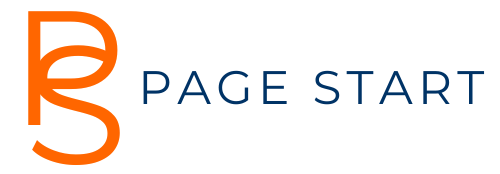In today’s digital age, the mortgage industry is undergoing a significant transformation, shifting from traditional, paper-based processes to streamlined digital solutions. A digital mortgage strategy integrates technology throughout the mortgage process, from initial application to the final closing, leveraging tools like online applications, digital document processing, and automated decision-making. This shift not only caters to the growing demand for speed and efficiency but also aligns with the increasing preference for digital interactions in every sphere of life. The purpose of this blog post is to explore the manifold benefits of adopting a digital mortgage strategy, underlining its growing importance in the competitive mortgage industry.
Streamlined Application Process

Digital mortgage strategies revolutionize the application process by making it simpler, faster, and more user-friendly. By replacing traditional paperwork with digital forms, these strategies eliminate the cumbersome process of manually filling out, submitting, and processing physical documents. This digitization not only reduces the time and effort involved in application submission but also significantly accelerates the processing speed. Lenders benefit from automated data capture and processing, which allows them to handle applications more efficiently and respond to potential borrowers in a fraction of the time. For applicants, this means a smoother, hassle-free experience, devoid of the delays and frustrations often associated with traditional mortgage applications.
Improved Customer Experience
A digital mortgage strategy dramatically enhances the overall customer experience by introducing a level of convenience and transparency that was previously unattainable. Features like online account access allow borrowers to submit applications, upload necessary documents, and track their application status from the comfort of their homes or on the go. Automated updates and notifications keep borrowers informed about their application progress in real-time, eliminating the uncertainty and anxiety that often accompanies the waiting period in traditional mortgage processes. This proactive approach to customer engagement not only meets but often exceeds customer expectations, leading to higher satisfaction rates.
Faster Approval and Closing
Digital mortgage strategies significantly speed up the approval and closing processes, a critical factor in the time-sensitive real estate market. By employing automation and digital signatures, these strategies eradicate the bottlenecks associated with traditional mortgage processing, such as manual review of documents and physical signing meetings. The use of sophisticated algorithms for credit checks and risk assessment further accelerates the decision-making process, enabling lenders to provide rapid responses to applicants. For borrowers, this means a quicker transition from application to homeownership, a vital advantage in fast-moving real estate markets. Lenders, on the other hand, benefit from the increased efficiency, which allows them to close more deals in less time, optimizing their operations and boosting their market competitiveness.
Enhanced Accuracy and Error Reduction

The shift to a digital mortgage strategy significantly enhances the accuracy and consistency of mortgage processing. Digital tools and automated systems are meticulously designed to handle data with precision, minimizing the chances of human error that often accompany manual processing. This meticulous accuracy is particularly crucial in the mortgage industry, where even minor discrepancies or oversights can lead to significant legal and financial repercussions. By ensuring that every piece of information is correctly captured, processed, and stored, digital strategies reduce the occurrence of errors, disputes, and delays. Moreover, the ability to easily update and retrieve digital records streamlines the audit process, ensuring compliance and transparency.
Cost Savings
Implementing a digital mortgage strategy can lead to substantial cost savings for lending institutions. The digitization of processes significantly reduces the need for paper, printing, and physical storage, cutting down on material and operational costs. Moreover, the increased efficiency and speed of digital processes reduce the man-hours required for mortgage processing, allowing staff to focus on more strategic tasks that add value to the business. These savings can be substantial, especially for larger institutions handling a high volume of transactions.
Better Risk Management
Digital mortgage strategies substantially enhance risk assessment and management capabilities. By leveraging advanced data analytics and predictive modeling, lenders gain deeper insights into borrower behavior, market trends, and potential risk factors. This data-driven approach allows for more accurate and informed decision-making, enabling lenders to tailor their products and services to meet the specific needs and risk profiles of their customers. Moreover, the real-time monitoring and analysis capabilities of digital systems allow for proactive risk management, identifying potential issues before they escalate into significant problems. This not only protects the financial stability of the lending institution but also ensures a safer borrowing environment for customers.
Regulatory Compliance

Navigating the complex landscape of mortgage regulations is a challenge that digital mortgage strategies adeptly address. Automated recordkeeping and reporting ensure that every transaction is documented accurately and in compliance with relevant laws and standards. Digital systems provide a clear, auditable trail of every interaction, making it easier to adhere to regulatory requirements and respond to audits or inquiries. Furthermore, the ability to quickly adapt and update digital systems in response to changing regulations ensures that lenders remain compliant, even as laws evolve.
Accessibility and Convenience
The convenience and accessibility offered by digital mortgage strategies cannot be overstated. Borrowers can initiate and manage their mortgage application from anywhere, at any time, using any internet-enabled device. This level of accessibility is particularly beneficial for individuals with hectic schedules or those living in remote areas. The ability to review documents, submit inquiries, and receive updates online eliminates the need for time-consuming visits to physical branches. For lenders, the digital platform opens up opportunities to reach a wider audience, breaking geographical barriers and tapping into new customer segments.
Competitive Advantage
Adopting a digital mortgage strategy provides a significant competitive advantage in the ever-evolving mortgage market. It positions lenders as forward-thinking and customer-centric, appealing to a tech-savvy generation of borrowers who value efficiency and digital interaction. A digital-first approach differentiates lenders from their competitors, showcasing their commitment to innovation and customer service.
Scalability and Growth

Digital mortgage strategies are inherently scalable, allowing lenders to efficiently handle an increasing volume of applications without a proportional increase in resources or costs. This scalability is vital for growth, enabling lenders to expand their operations, enter new markets, and cater to a larger customer base without compromising on service quality. The digital infrastructure supports this expansion seamlessly, accommodating increased demand and facilitating a smooth scaling process. For lenders aiming for growth, the ability to scale efficiently is not just an advantage but a necessity, making a digital mortgage strategy a fundamental component of their business model.
Conclusion
The benefits of implementing a digital mortgage strategy are manifold, ranging from improved efficiency and customer satisfaction to cost savings and competitive advantage. The mortgage industry is evolving, and digitalization is at the forefront of this transformation. As we have discussed, a digital mortgage strategy not only meets the current demands of the market but also positions lenders for future success. It’s an investment in innovation, customer service, and growth. For mortgage industry professionals, the message is clear: embracing a digital mortgage strategy is not just about keeping up with the times—it’s about setting the pace for the future.

